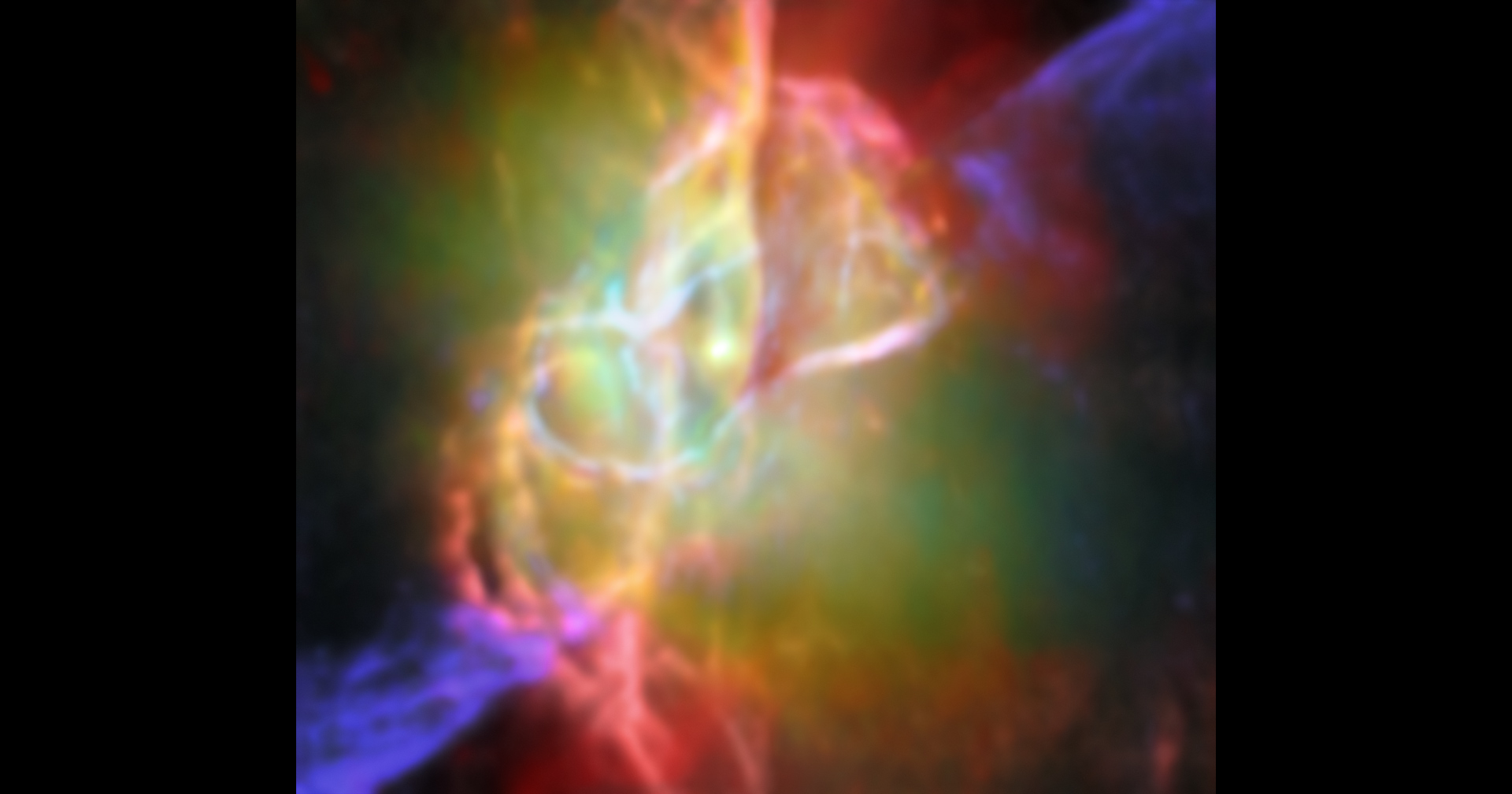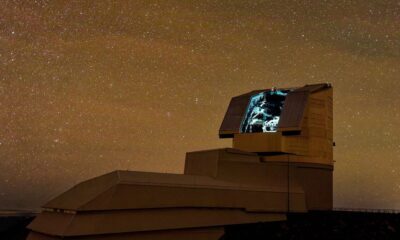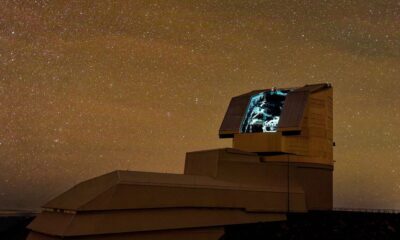Science
Western Researchers Uncover Chemistry Secrets of the Butterfly Nebula

The recent observations from the James Webb Space Telescope have led to groundbreaking discoveries about the chemistry of the Butterfly Nebula (NGC 6302), located approximately 3,400 light-years away. Researchers from Western University have identified unexpected molecules and gained insights into the formation of complex carbon structures in space, significantly enhancing our understanding of cosmic chemistry.
The findings were released by the European Space Agency and published in the Monthly Notices of the Royal Astronomical Society. The stunning imagery reveals the intricate structures within the Butterfly Nebula, which serves as a chemical laboratory where various molecular processes occur. According to Jan Cami, a professor of physics and astronomy at Western, the chemical signatures detected in these regions act as fingerprints, providing essential information about the physical processes at work.
Unprecedented Discoveries in Cosmic Chemistry
The Butterfly Nebula is classified as a bipolar nebula, characterized by two lobes extending in opposite directions, resembling the wings of a butterfly. A dark band of dusty gas forms the central “body” of the nebula, obscuring the ancient core of a Sun-like star that energizes the surrounding gases.
Using the new images from Webb, graduate student Charmi Bhatt made a significant discovery: the first detection of CH3+ (methyl cation) in any planetary nebula. This carbon-containing molecule was not expected to survive in the nebula’s oxygen-rich environment. Bhatt explained, “Using the James Webb Space Telescope, we’ve detected CH3+ in an environment where such carbon-containing molecules shouldn’t exist,” highlighting the surprising chemical dynamics influenced by intense ultraviolet radiation from the central star, which reaches temperatures of 220,000 degrees Kelvin.
The implications of this discovery extend beyond the Butterfly Nebula, suggesting that complex chemistry can thrive in conditions previously deemed inhospitable for such molecules. “This molecule is like a key that unlocks an entire chemical network we didn’t know was possible,” Bhatt noted.
Insights into Polycyclic Aromatic Hydrocarbons
In addition to the discovery of CH3+, the team also identified light emitted by polycyclic aromatic hydrocarbons (PAHs), which are carbon-based molecules that form flat, ring-like structures. Graduate student Nicholas Clark analyzed the PAHs and reported that they exhibit unusual behavior within the nebula. “In the Butterfly Nebula, we’re seeing these molecules behave in unexpected ways—reflecting the nebula’s complex physical conditions,” Clark stated.
This observation sheds light on a longstanding mystery in astrophysics: the formation processes of PAHs. Clark expressed excitement over the potential breakthroughs this research could bring, saying, “The formation of PAHs has been one of our field’s most challenging puzzles.”
The collaborative efforts between Western researchers and scientists from the United Kingdom, United States, and France underscore the importance of international cooperation in scientific discovery. Els Peeters, another professor at Western, emphasized that the diverse expertise brought together by this collaboration enhances their ability to interpret Webb’s observations.
The discoveries made by this international team are more than just visually stunning; they represent active chemical processes occurring in distant regions of the universe. As researchers continue to analyze the data, the findings from the Butterfly Nebula may lead to a deeper understanding of chemical processes in other stellar environments.
The James Webb Space Telescope has transformed the field of astronomy, enabling scientists to explore previously unreachable corners of the cosmos. With each new discovery, the potential for uncovering the mysteries of the universe expands, and the collaborative efforts of researchers like those at Western University promise to illuminate further the intricate chemistry of our universe.
-

 Politics4 weeks ago
Politics4 weeks agoSecwepemc First Nation Seeks Aboriginal Title Over Kamloops Area
-

 World5 months ago
World5 months agoScientists Unearth Ancient Antarctic Ice to Unlock Climate Secrets
-

 Entertainment5 months ago
Entertainment5 months agoTrump and McCormick to Announce $70 Billion Energy Investments
-

 Science5 months ago
Science5 months agoFour Astronauts Return to Earth After International Space Station Mission
-

 Lifestyle5 months ago
Lifestyle5 months agoTransLink Launches Food Truck Program to Boost Revenue in Vancouver
-

 Technology3 months ago
Technology3 months agoApple Notes Enhances Functionality with Markdown Support in macOS 26
-

 Lifestyle3 months ago
Lifestyle3 months agoManitoba’s Burger Champion Shines Again Amid Dining Innovations
-

 Top Stories2 months ago
Top Stories2 months agoUrgent Update: Fatal Crash on Highway 99 Claims Life of Pitt Meadows Man
-

 Politics4 months ago
Politics4 months agoUkrainian Tennis Star Elina Svitolina Faces Death Threats Online
-

 Sports5 months ago
Sports5 months agoSearch Underway for Missing Hunter Amid Hokkaido Bear Emergency
-

 Politics5 months ago
Politics5 months agoCarney Engages First Nations Leaders at Development Law Summit
-

 Technology5 months ago
Technology5 months agoFrosthaven Launches Early Access on July 31, 2025





















